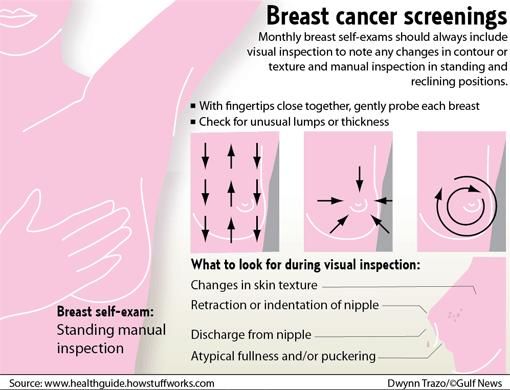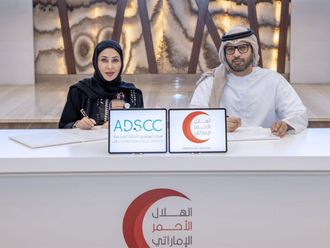Abu Dhabi: For the first time in the UAE, women aged 35 and above will get insurance coverage for an annual breast cancer screening programme.
Starting on Tuesday, women will be covered by the National Health Insurance Company (Daman) and are entitled to receive annual clinical examination, radiology and laboratory investigations for breast cancer with healthcare providers selected by the company.
"We hope that by including free screening in our plans, women will be encouraged to take the test, thus decreasing the spread of such a disease," said Dr Michael Bitzer, CEO, Daman.
According to statistics released by the Ministry of Health between 1998 and 2002, there were 140 breast cancer cases in the UAE, making it the second biggest cancer killer in the UAE, accounting for 22.8 per cent of the total number of diagnosed cancer cases.
Tumour
"Those are drastic numbers, symptoms only occur when the tumour has already been fully developed. Early detection can highly increase survival chances," said Bitzer.
In addition, the Health Authority Abu Dhabi (HAAD) had earlier announced a two-year plan to spend around Dh80 million on breast cancer facilities after 2007 statistics showed that nearly 70 per cent of cancers in Abu Dhabi are detected late, when the chance of a successful cure is much lower.
"Our analysis shows that if successful, the project will save up to 60 lives every year. The single most important message we want to send to women is: early detection saves lives. All women should examine their own bodies to check for early signs of breast cancer," said Dr Oliver Harrison, Head of Public Health, HAAD.
Over 80 per cent of breast cancer diagnosis in the UAE is made in the advanced stages when the odds on complete recovery are slimmer. Finding the tumour in the early stages is vital to prevent the spreading of malignant cells, which makes breast screening a key prevention step.
"Effective prevention is better than cure whether you are looking at pure economics or human suffering," added Harrison.
Warning signs: Marked changes
Some of the changes that you should inform your doctor
- A lump in either breast or armpit.
- A lumpy area or thickening anywhere in the breast that feels different from the rest of the breast tissue.
- Enlarged glands under either armpit.
- Bloodstained nipple discharge.
- Any marked change of appearance or a rash around the nipple
- Differences in skin texture such as puckering or dimpling.
- A change in the size or shape of one breast.
- Swelling, thickening or persistent pain in either breast that feels different from premenstrual tenderness.
- Swelling of the upper arm.
- Screening by age
- 90 per cent of breast lumps are benign (non cancerous).
- Women between 40 and 50 years should be screened every two years, and women over the age of 50 should be screened annually.
- Women over the age of 20 should examine themselves at the same time every month, as the breasts can naturally become lumpier throughout the menstrual cycle. This should be five to seven days into the cycle.
- Pregnant women and women with breast implants should continue to examine themselves, and nursing women can also continue this habit once all the milk has been expressed.
- Cancer Care Centre and Breast Clinic at the American Hospital, Dubai.













